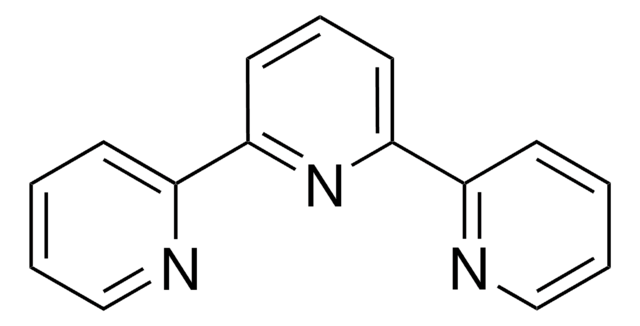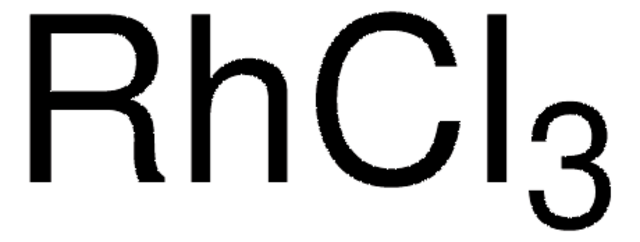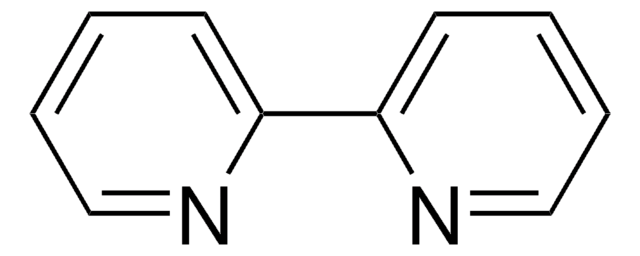935484
Ruthenium(III) chloride
anhydrous, powder, 99.99% trace metals basis
Synonym(s):
Ruthenium chloride, Ruthenium trichloride, Trichlororuthenium
About This Item
99.99% trace metals basis
Recommended Products
Quality Level
Assay
40-50% Ru basis (gravimetric)
99.99% trace metals basis
form
powder
specific gravity measuring range
6.97 g/mL
impurities
≤150 ppm (trace metals analysis)
color
dark gray to black
pH
1-2
solubility
water: soluble
density
3.11 g/mL at 25 °C (lit.)
SMILES string
Cl[Ru](Cl)Cl
InChI
1S/3ClH.Ru/h3*1H;/q;;;+3/p-3
InChI key
YBCAZPLXEGKKFM-UHFFFAOYSA-K
Looking for similar products? Visit Product Comparison Guide
General description
Application
Signal Word
Danger
Hazard Statements
Precautionary Statements
Hazard Classifications
Acute Tox. 4 Oral - Aquatic Chronic 2 - Eye Dam. 1 - Skin Corr. 1B
Storage Class Code
8A - Combustible corrosive hazardous materials
WGK
WGK 3
Flash Point(F)
Not applicable
Flash Point(C)
Not applicable
Choose from one of the most recent versions:
Certificates of Analysis (COA)
It looks like we've run into a problem, but you can still download Certificates of Analysis from our Documents section.
If you need assistance, please contact Customer Support.
Already Own This Product?
Find documentation for the products that you have recently purchased in the Document Library.
Our team of scientists has experience in all areas of research including Life Science, Material Science, Chemical Synthesis, Chromatography, Analytical and many others.
Contact Technical Service








